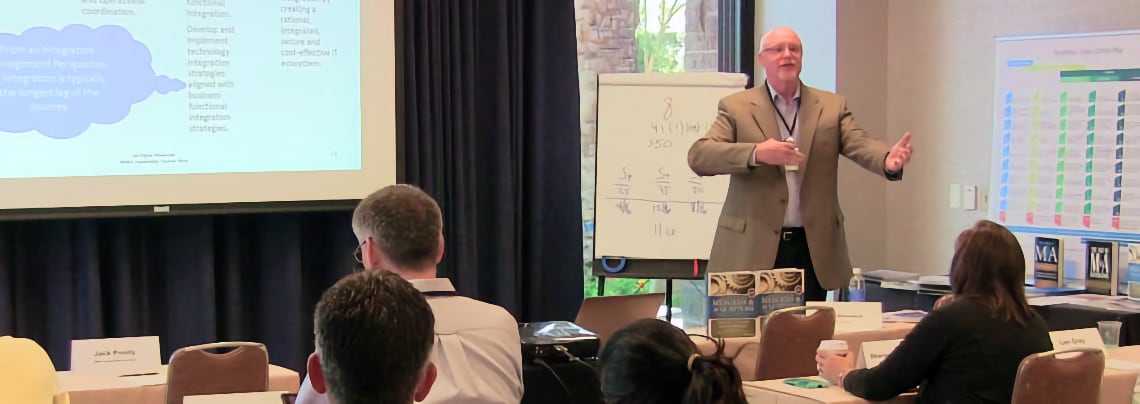You’ve heard the old one-liner about the two things you never want to see being made. The first is sausage. The other is legislation. Or, in our case, M&A methodology. First, let’s define what we are talking about. When we say “M&A methodology” we are referring to how your organization does M&A. This is the overall deal
Most companies have to consider acquisitions and divestitures at different stages of development. Ultimately, most companies will also be faced with an opportunity to sell the entire company, and in some cases there will be little choice if shareholders like the premium being offered. Yet, many companies do not consider acquisitions, divestures or, in particular, the ultimate sale of the company as part of strategy development.
Third in a series, by Jim Jeffrries
Companies, their customers, and their stakeholders cannot and will not tolerate an integration time frame of more than 12 months, period. If you can’t integrate in 12 months or less, forget it!
Many companies consistently operate in the intuitive mode of “don’t rock the boat”, “let’s take our time with this and give the organization time to adjust,” “let’s get everything right the first time.” Haven’t you heard that before?
(Excerpts from The Art of M&A Strategy, Smith & Lajoux, McGraw Hill, New York, 2011, updated)
“You got to know when to hold ’em, know when to fold ’em,
Know when to walk away and know when to run.”
Kenny Rogers - The Gambler
This is part of our on-going series on how companies can build in-house competencies in mergers, acquisitions, and divestitures through cost-effective in-house training programs offered through the M&A Leadership Council.
Today’s topic: Managing a Divestiture to Success
Mergermarket has released its Global M&A roundup for Q1-Q3, including its league tables for financial advisors. Take a look at the report HERE.
A few key findings include:
Jim Jeffries recently asked me “what’s new” in the second edition of my book Joining Forces: Making One Plus One Equal Three in Mergers, Acquisitions and Alliance. I responded that, since the book’s initial publication, the role of culture in M&A has become much more widely recognized, but not in an obvious way. Recent research conducted for the new edition shows that culture—and, in particular culture clash—can be a boon or a bust
In my last blog, I pointed out the value of certainty in M&A. As increasing levels of scrutiny are applied to deal success by stakeholders, there is a requirement that growth by acquisitions become more of a core competency for active buyers just like other competitive advantages within the company. There is great value in the certainty that an acquisition will be successful. But, most are not.
I don’t know about you, but I’m looking forward to the new year already. 2013 has been a great year for the Leadership Council and our partner companies, but we could all use a little more growth in M&A, stabilization of the financial markets, economic growth and yes, world peace! Right? The M&A Leadership Council has great plans for next year as we continue to grow in knowledge and synchronize our training programs to serve all levels and stages of the M&A lifecycle.
by Jack Prouty
President of the M&A Leadership Council
One of our workshop Alumni suggested we feature a series on building in-house competencies in our monthly newsletter. In each issue we’ll emphasize one of our key workshop points as a focus for best practices or capabilities.
